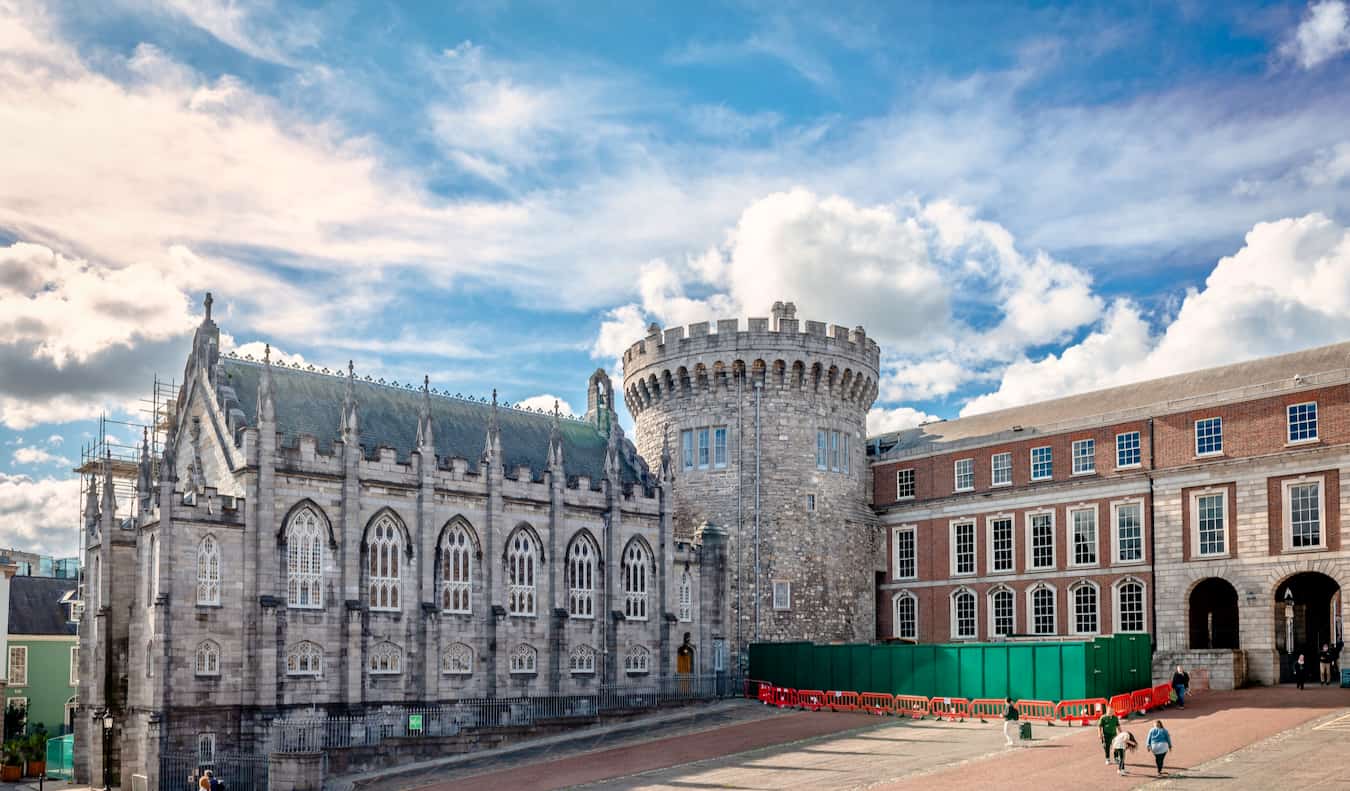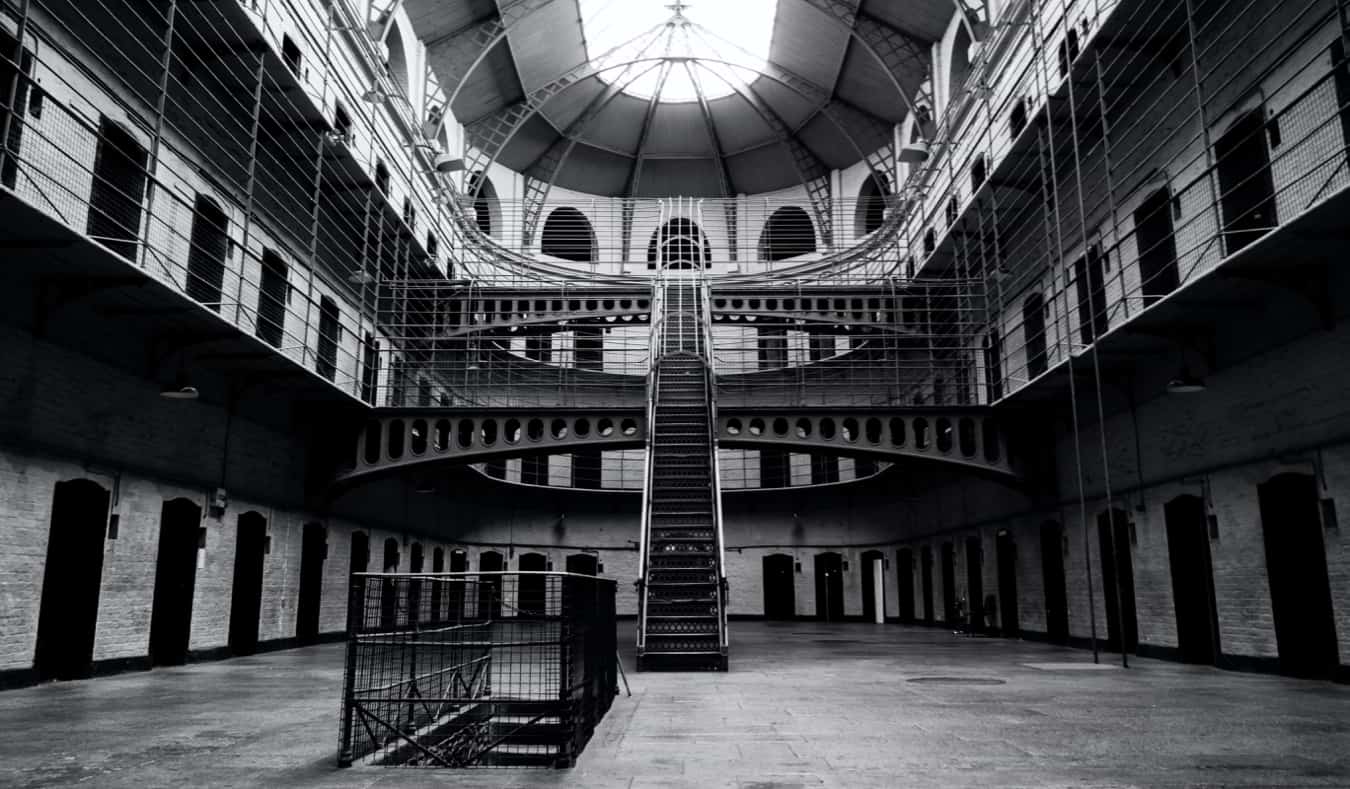
Last Updated: 6/8/23 | June 8th, 2023
It’s impossible to see a city — any city — in a mere 24 hours. It takes months, if not years, to really get under the skin of a place. But as travelers, we don’t always have months (let alone years!). Sometimes all we have is a single day, enough for just a cursory glance and testing of the cultural waters. You’ll never come away with an in-depth understanding of a city that way, but that doesn’t mean you shouldn’t try!
Which is exactly what I had to do when I found myself on an overnight layover in Dublin. I had only twenty-four hours to visit the city and needed to cram a thousand-year-old city into one day of travel.
Was it possible? Yes. Was it hard? Ohh yeah!
Here’s how I spent a day in Dublin:
Table of Contents
8:00am – Wake Up/Shower/Breakfast
Pack some snacks and put on your walking shoes. It’s going to be a busy day! Grab some breakfast at your hostel or somewhere nearby. Ask your hostel staff for recommendations — they’ll have some places to suggest! You’ll be on your feet all day so it’s best to fill up now. You’ll burn those calories off soon enough!
Also, make sure you fill up your water bottle before you leave and that your camera is charged and ready to go!
9:00am – Dublin Castle
Dublin Castle is more like a palace than a castle, but it’s good to see quickly. It was first founded in the 13th century, though it has been rebuilt numerous times over the years (most of the current building was constructed in the 18th century). Until 1922, this is where the British ruled Ireland from.
During your visit, you’ll have the option of a guided tour or a self-guided tour. The self-guided tour won’t cover as many exhibits, though it will be faster so just choose whichever option suits your interest.
Admission is 12 EUR for the guided tour and 8 EUR for the self-guided tour. The castle is open daily 9:45am-5:45pm.
9:30am – St. Patrick’s Cathedral
Named after the patron saint of Ireland, this cathedral is quite impressive. The present buildings date from 1191, and the famous Marsh’s Library is the oldest in Ireland.
It’s the official National Cathedral of Ireland, though unusually there isn’t actually a bishop here (official cathedrals usually require a bishop). Dublin has another cathedral (Christ Church Cathedral), which is quite rare — usually, only 1 cathedral is allowed in a city. This is why St. Patrick’s has become the National Cathedral: to avoid conflicting with Christ Church Cathedral as the city’s official cathedral.
The cathedral is open weekdays from 9:30am-5pm and from 9am-6pm on Saturdays (there are limited hours also on Sunday, which vary depending on the time of year). Admission is 9 EUR for adults and there are free guided tours available throughout the day.
10:00am – Guinness Storehouse
There’s nothing like starting your day with a hearty pint! (It’s 5 o’clock somewhere, right?) Here you can learn all about the history of Guinness, Ireland’s most famous beer.
The factory here was bought in 1759 and has a 9,000-year lease. It produces around three million pints of Guinness a day, and, the end of their 90-minute tour, you can head up to the Gravity Bar for a free pint. The place also provides excellent 360° views of the city. Try to avoid visiting on weekend afternoons as the place becomes standing room only.
Admission is 26 EUR (which includes a free pint). But if you really want to go all out and get an extra pint with a selfie of your face in it, the Guinness Storehouse + Stoutie option is 34 EUR. The storehouse is open Monday-Friday from 10am-7pm (the last entry is at 5pm), Saturday 9:30am-8pm (last admission is at 6pm), and Sundays 9:30am-7pm (last admission is at 5pm).
12:00pm – Kilmainham Gaol
This gaol was used as a prison up until 1910. It was temporarily used after the 1916 Easter uprising and during the War of Independence for imprisonment and mass executions. Often there were about eight people to a tiny cell. There was no segregation, either. Men, women, and children all shared cells (records show kids as young as 7 being held here). Each cell only had a single candle for light, as well.
To keep the prison population in check, many adult prisoners were shipped off to Australia.
In 1960, it was restored and opened as a museum in the 1990s. It has a great introductory exhibit, and your ticket gets you a tour that lasts one hour and begins on the hour.
Opening hours vary depending on the month, but it’s usually open 9:30am-5:15pm. Admission is 8 EUR for adults, with discounts available for families, students, and seniors. Be sure to book your tickets in advance as access is only available with a guided tour.
1:00pm – Lunch
I really enjoyed the area around Mary/High Street. It’s far away from the Gaol, so you need to take the bus. The area is also right near the Dublin Spire and is a big pedestrian shopping area with a lot of restaurants. During the weekend, there are some outdoor food markets.
2:00pm – Irish Emigration Museum
Ireland has a long and unfortunately not always uplifting history of emigration following famine, political turmoil, religious conflicts, and economic conditions. This museum is a beautiful tribute to the Irish diaspora around the world and features their contributions throughout history.
There are various exhibits on literature, politics, science, music, technology, sports, humor, fashion in a unique visually and audibly captivating experience that encapsulates the touching personal stories of famous Irish immigrants across history.
Open daily 10am-6:45pm. They recommend 90 minutes but it’s doable in an hour if you really need to. Tickets are 19 EUR online or 21 EUR at the door.
3:00pm – Trinity College/Book of Kells
This is Ireland’s most famous college. The main draw here is the Book of Kells, a ninth-century illuminated manuscript. Seeing this incredibly rare book in person is an amazing experience so don’t miss the opportunity!
They’ve recently changed their tour policy, so all tours are now run by a single agency. Every guide is a student of Trinity College and tours run for 35 minutes.
Tickets for the tour and admission to see the Book of Kells cost 18.50 EUR. Tours run daily at specific times, but the schedule changes every month so be sure to book ahead of time.
4:00pm – National History Museum
Finish your day here by learning all about the history of Ireland. The museum covers everything from the Vikings to English rule to Michael Collins and the IRA to independence. It’s a very comprehensive museum so you could easily spend a few hours here (if you want a couple of hours here, just shift your day around so you arrive at 3pm instead of 4pm).
Admission is free. The museum is closed on Mondays. It’s otherwise open Tuesday-Saturday from 10am-5pm and Sundays from 1pm-5pm.
6:00pm – Dinner and Drinks on Temple Bar
Sure, it’s touristy, but it’s quite a good “craic” as the Irish would say. You can get away from the main tourist fare and head to the Porterhouse, a local brewery that makes an excellent stout and great Irish food. No matter where you go, though, after running around all day, you’ll definitely need another drink and some hearty food.
If you’re not sure where to look, ask your hostel staff. They can help you find a lively pub to spend the evening!
Dublin is a city that requires more than just 24 hours. If you’re on the clock and can only manage a short visit, consider taking the hop on/hop off tour bus. I know it’s super touristy, but it will dramatically cut down your walking time and allow you to squeeze more into your day.
If you have even less time, consider taking a free walking tour. You’ll get to see most of the main sights and get to learn some of the history without having to spend the entire day running around the city (most tours last 3 hours). Just be sure to tip your guide!
I loved my time in Dublin. Twenty-hour hours doesn’t do this place justice but if you’re looking for how to spend a long layover in Dublin or organize your time here, I hope this post helped!
Book Your Trip to Dublin: Logistical Tips and Tricks
Book Your Flight
Use Skyscanner to find a cheap flight. They are my favorite search engine because they search websites and airlines around the globe so you always know no stone is left unturned.
Book Your Accommodation
You can book your hostel with Hostelworld as they have the biggest inventory and best deals. If you want to stay somewhere other than a hostel, use Booking.com as they consistently return the cheapest rates for guesthouses and cheap hotels. My favorite place to stay is Generator Hostel. It’s clean, cheap, and they often play live music.
Don’t Forget Travel Insurance
Travel insurance will protect you against illness, injury, theft, and cancellations. It’s comprehensive protection in case anything goes wrong. I never go on a trip without it as I’ve had to use it many times in the past. My favorite companies that offer the best service and value are:
- Safety Wing (best for everyone)
- Insure My Trip (for those over 70)
- Medjet (for additional evacuation coverage)
Looking for the best companies to save money with?
Check out my resource page for the best companies to use when you travel. I list all the ones I use to save money when I’m on the road. They will save you money when you travel too.
Want More Information on Dublin?
Be sure to visit our robust destination guide on Dublin for even more planning tips!







